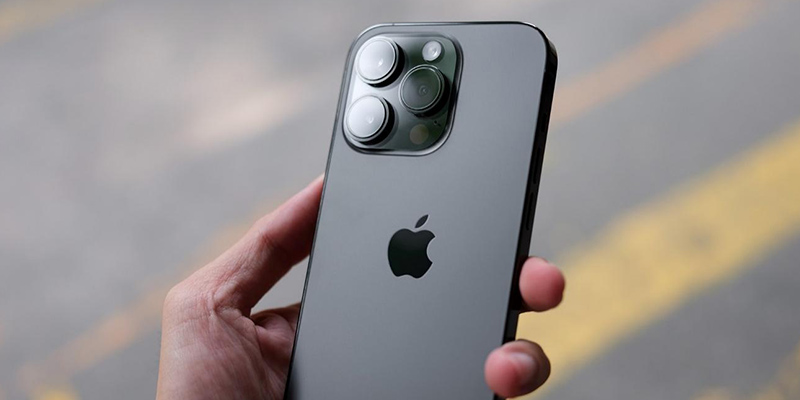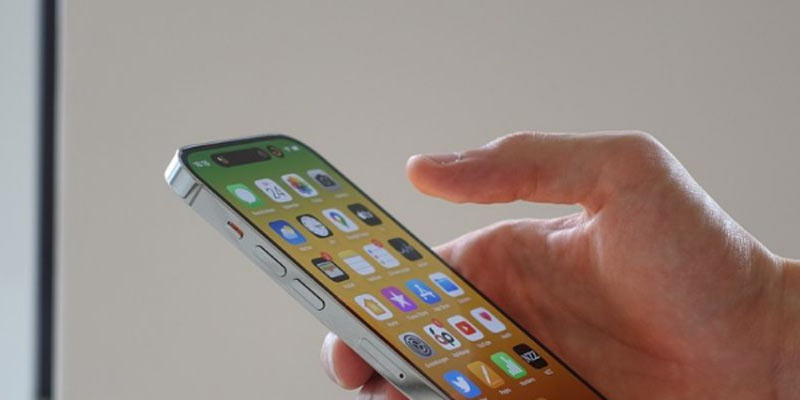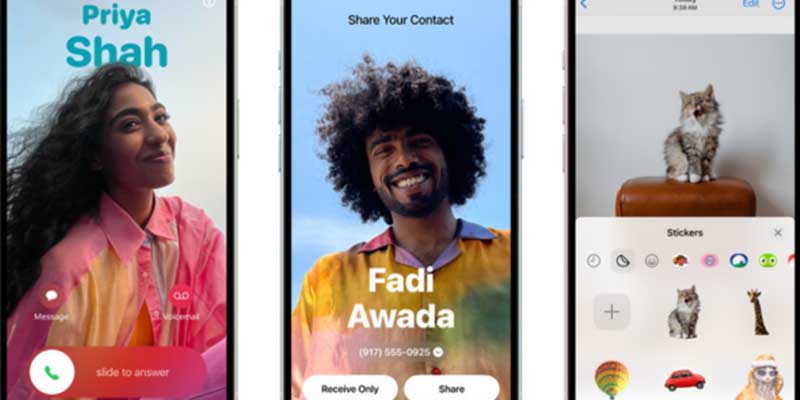As Apple continues to innovate with each new iPhone iteration, a burning question that consistently emerges revolves around its charging capabilities. Since the introduction of the Lightning port in 2012 with the iPhone 5, this unique charging mechanism has been a staple of Apple’s design. However, with evolving technological standards and the rising prominence of USB-C and wireless charging across the tech industry, many are wondering if the iPhone 15 will retain this iconic port or finally make the switch. Will the iPhone 15 follow in the footsteps of the iPhone 14 and continue to use the Lightning charging port?
Latest News About iPhone 15
The tech world is buzzing with anticipation as the launch of Apple’s iPhone 15 series inches closer, expected to make its grand appearance in September 2023. Ever since the iPhone 14 lineup made its debut last year, rumors and speculations have been running rampant, suggesting what we might expect from the iPhone 15, iPhone 15 Plus, iPhone 15 Pro, and iPhone 15 Pro Max models.
Interestingly, there have been whispers about the possibility of an all-new category: the iPhone 15 Ultra. While this buzz has quieted down lately, some last-minute leaks are keeping the hope alive that Apple might still introduce its first ‘Ultra’ model this year.
As far as the iPhone 15 release date goes, although Apple tends to be tight-lipped until the eleventh hour, signs are pointing toward an official announcement in the near future. Historically, Apple has used September as the month to unveil its latest iPhones, and this year appears to be no different. The exact date of the event isn’t confirmed, but by piecing together clues from past events and current rumors, we can make an educated guess.
All arrows point toward either Tuesday, September 12, or Wednesday, September 13, as the likely date for Apple’s next big reveal. Following this, we expect that pre-orders for the iPhone 15 series will kick off on Friday, September 15, with the first wave of devices probably shipping out a week later on Friday, September 22.
Further fueling the fire of these speculations, a report from 9to5Mac has stated that Apple has advised its employees to avoid taking leave on Wednesday, September 13, hinting at a “major smartphone announcement.” Additionally, Bloomberg’s resident Apple guru, Mark Gurman, has weighed in, suggesting that the iPhone 15 lineup will likely be introduced during the second full week of September 2023. Gurman even refined his prediction, narrowing it down to Tuesday, September 12 as the probable iPhone 15 release date. With Labor Day falling on Monday, September 4 this year, that date seems even more plausible.
So, while nothing is officially confirmed, the tech community is brimming with excitement and educated guesses about what’s on the horizon for Apple and its flagship smartphone line. Stay tuned as we get closer to what promises to be another landmark event in the world of mobile technology.
What Charging Port Does the iPhone 14 Use?
The iPhone 14, like several of its predecessors, employs the Lightning port for charging and data transfer. Introduced with the iPhone 5 in 2012, the Lightning port was a significant shift from the 30-pin dock connector used in previous iPhone models. The Lightning port’s design is reversible, which means users don’t have to worry about which side is up when plugging in their device, a convenience that was well-received by users.
Over the years, the Lightning port has been a staple of Apple’s design, not just in iPhones, but also in other devices like iPads and even some iPods. Its compact design allowed Apple to make their devices slimmer and pack in more technology, while also providing faster data transfer speeds and charging capabilities compared to the old 30-pin connector.
Moreover, the iPhone 14 charging port does support wireless charging. But it’s worth noting that the charging speed isn’t as quick as its wired counterpart. The maximum wireless charging speed for the iPhone 14 is around 7.5W, which is considerably slower. But the good news is its universal compatibility with the Qi standard. This ensures that your iPhone 14 will comfortably and effectively charge on virtually any wireless charging mat or stand available in the market.
Will the iPhone 15 Use the Lighting Interface?
The iPhone 15 is anticipated to mark a significant departure from the longstanding tradition of the Lightning port. As technology evolves and the need for universal charging solutions becomes more pressing, Apple seems to be considering a shift. The European Union has been pushing for a common charging standard, urging tech companies to adopt USB-C as a universal solution to reduce electronic waste and make life easier for consumers.
While Apple has incorporated USB-C in some of its devices, like the iPad Pro and MacBooks, the iPhone has remained tethered to the Lightning port—until now. The iPhone 15 is expected to be the bridge to this new era, aligning with global standards and setting the stage for future devices.
What Charging Port Will the iPhone 15 Use?
The Apple iPhone 15 is poised to embrace the USB-C charging port, a move that has been long speculated and debated among tech enthusiasts and experts. C port charger, known for its high-speed data transfer rates and rapid charging capabilities, has become the standard in many modern electronic devices, from laptops to Android smartphones. The transition to USB-C in the Apple iPhone 15 signifies Apple’s commitment to a more universal and efficient charging solution.
This change is not just about faster charging or data transfer; it’s about a more streamlined ecosystem where users don’t need multiple cables for their devices. With the European Union’s directive and the tech industry’s general shift towards USB-C, Apple’s decision to incorporate it into the iPhone 15 seems like a natural progression. This move will likely be welcomed by many, as it means easier compatibility with a range of accessories and devices, marking a new chapter in Apple’s design philosophy.
Lighting Charging Port
The Lightning charging port is a proprietary connector introduced by Apple in September 2012, replacing the older 30-pin dock connector. It was first implemented in the iPhone 5 and has since become the standard charging and data transfer solution for Apple’s range of devices, including iPads, iPods, and even some accessories like the Apple Pencil. The Lightning charger port is notably reversible, meaning it can be inserted either way, eliminating the common issue of trying to plug a connector in the wrong way. Its design is sleek, compact, and significantly smaller than its predecessor, allowing Apple to produce slimmer devices with more space for other internal components.
Why Did Apple Give up the Lighting Interface?
Apple’s decision to move away from the Lightning interface is influenced by several factors:
Global Standardization: The tech industry has been gravitating towards C port charger as a universal standard. The European Union, in particular, has been pushing for a common charging solution to reduce electronic waste and make devices more user-friendly.
Technological Advancements: USB-C offers faster data transfer speeds and more efficient charging capabilities compared to the Lightning port.
Inter-device Compatibility: With Apple’s other products like the MacBook and iPad Pro already adopting USB-C, a shift in the iPhone 15 charger lineup ensures a more consistent and streamlined ecosystem.
Advantages and Disadvantages of the Lighting Interface
Advantages
Reversible Design: The Lightning port’s design ensures users don’t have to fumble around trying to plug it in the right way.
Compact: Its small size allowed Apple to design thinner devices.
Fast: For its time, the Lightning charger port offered relatively quick data transfer and charging speeds.
Proprietary: Being an Apple-exclusive port, it allowed the company to have more control over accessory manufacturing and licensing through its MFi (Made for iPhone/iPad) program.
Disadvantages
Not Universal: Being proprietary meant that other devices couldn’t use it, leading to a need for multiple cables and adapters for different devices.
Durability Issues: Some users reported wear and tear issues over time, especially with the cables.
Technological Limitations: As technology advanced, faster and more efficient ports like USB-C emerged, making the Lightning charger port seem outdated.
Advantages of the New iPhone 15 Charging Port
Universal Compatibility: USB-C is becoming the industry standard, meaning one cable can be used for a multitude of devices, from phones to laptops to cameras.
Faster Data Transfer: USB-C offers incredibly fast data transfer speeds, which is especially beneficial for tasks like transferring large files or videos.
High Power Delivery: C port charger can deliver more power than the Lightning port, leading to faster charging times for devices.
Versatility: Beyond just charging and data transfer, the iPhone 15 USB-C can also support video output and other functionalities, making it a multifunctional port.
Reversible: Like the Lightning port, USB-C is also reversible, ensuring ease of use.
Summary
The evolution of Apple’s charger port, from the introduction of the Lightning connector to the anticipated transition to the iPhone 15 charger port of USB-C, reflects the tech giant’s adaptability and response to both technological advancements and global standardization pressures. Apple’s decision to potentially adopt USB-C in its future devices including Apple iPhone 15, aligning with other products in its lineup, signifies a commitment to a more integrated and user-friendly ecosystem. This transition not only promises faster charging and data transfer but also a more cohesive inter-device experience, reducing the need for multiple cables and adapters.




